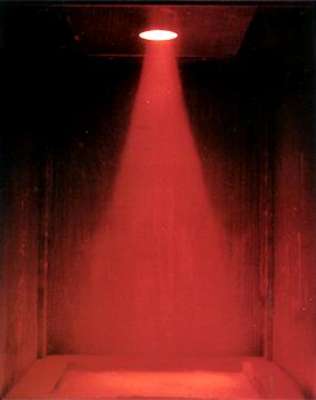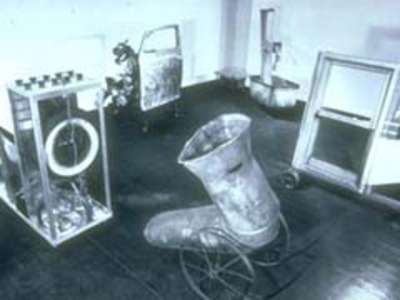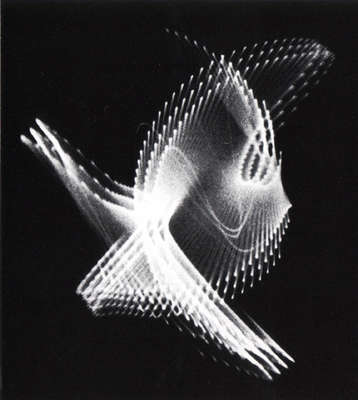One of the most important exhibitions of the late 1960s dealing with art and technology. On display at the Museum of Modern Art, New York, from 27 November, 1968, to 9 February, 1969. Subsequently also at the University of St. Thomas at Houston, TX (25 March to 18 May, 1969), and the San Francisco Museum of Modern Art (23 June to 24 August, 1969).
In a broad spectrum of exhibits, it contrasted the ever growing evolution of technology with humanistic values of art, the optimistic and the skeptical views of machines and technology.
The title of the exhibition referred to the changing nature of the machine in the late 20th century. For centuries, it had been the extension of human muscles, or other organic features of the human. But by the end of the mechanical age, machines were designed to imitate or simulate cognitive functions of the human brain: the computer, at times called the semiotic machine, began to take over the most prominent role from the mechanical machine of physical movement.
The exhibition deals with the consequences resulting from this change: “What is the distinction between a man and a machine” or “Are machines becoming like humans, or vice versa?”247
The Swedish curator of the show, K.G. Pontus Hultén, had been invited by the New York Museum of Modern Art, to develop an exhibition about cybernetic machines and processes. The Machine show became his final result. He states:
“Clearly, if we believe in either life or art, we must assume complete domination over machines, subject them to our will and direct them so that they may serve life in the most efficient way – taking as our criterion the totality of human life on this planet. […] In planning for such a world, and in helping to bring it into being, artists are more important than politicians, and even than technicians. But, of course, it is not artists in whom we ordinarily most place our confidence.” (cited after 251)
Nevertheless: “Perhaps the artist will show us the way to a better relationship [between man and machine].” 252
220 works where shown, displaying the myriad ways in which artists have viewed technology 252.
The exhibition also included works by Dürer and da Vinci as well as works by contemporary artists; during the preparation of the exhibition E.A.T. was asked to organize a competition in conjunction with “The Machine”, a competition “for the best contribution by an engineer to a work of art made in collaboration with an artist”250.
About 200 entries from nine countries where received. Nine (from 247, 247 states six) where selected to be shown at “The Machine”, the rest was shown at Some More Beginnings, Experiments in Art & Technology.
The winning entry was Heart Beats Dust, which was awarded the amount of $3000.
A program including computer-produced films, electronic music, lectures and discussions accompanied the exhibition.
2478252251
Review of the Exhibition : Time magazine issue, December 06, 1968.









